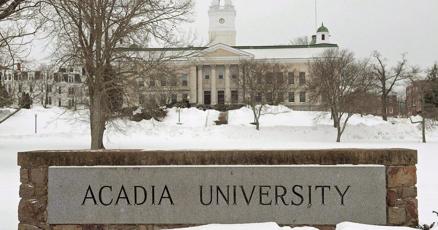Nova Scotia University Tuition Freeze 2024 with Increased Funding
In a landmark move for post-secondary education affordability, Nova Scotia has announced a two-year freeze on university tuition fees while simultaneously boosting institutional funding by $55 million. The decision, revealed Thursday by Advanced Education Minister Brian Wong, marks a significant shift in the province’s approach to balancing educational accessibility with institutional sustainability.
“This is about creating predictability for students and their families,” Wong stated during the announcement at Saint Mary’s University in Halifax. “Students have been clear that the rising cost of education is creating barriers, and we’re responding with concrete action.”
New Tuition Framework
The new framework replaces the previous system that allowed annual tuition increases of up to 3% for domestic students, which had been in place since 2019. International student tuition, which has seen substantial hikes in recent years, will also be capped at a maximum 3% increase during this period.
Increased Funding for Institutions and Students
The funding package includes $30 million in operating grants to universities and an additional $25 million specifically earmarked for student assistance programs. This represents the most substantial investment in Nova Scotia’s post-secondary education system in over a decade, according to government officials.
Reactions from Students and Faculty
Student advocacy groups have welcomed the announcement as a victory after years of campaigning for tuition relief. Lydia MacKay, chairperson of the Canadian Federation of Students-Nova Scotia, called the freeze “a crucial first step” but emphasized that more comprehensive reform is still needed.
“While we celebrate this win for students, we need to acknowledge that Nova Scotia tuition remains among the highest in Canada,” MacKay noted. “The freeze prevents further increases, but doesn’t address the fundamental affordability crisis many students already face.”
University administrators have expressed cautious optimism about the funding arrangement. Dr. Robert Summerby-Murray, President of Saint Mary’s University, acknowledged the challenges of balancing institutional needs with student affordability.
“This agreement provides some stability for our financial planning while recognizing the cost pressures students are facing,” Summerby-Murray said. “The additional operating grants will help offset the revenue limitations created by the tuition freeze.”
Concerns and Ongoing Challenges
The province has indicated that the funding boost is designed to support universities in maintaining educational quality while addressing operational costs. Critics, however, question whether the $55 million investment will be sufficient to cover rising expenses across the sector, particularly as inflation continues to impact institutional budgets.
The announcement comes against a backdrop of growing concerns about post-secondary affordability nationwide. Statistics Canada reports that the average undergraduate tuition in Nova Scotia currently sits at approximately $9,328 for domestic students, second only to Ontario among Canadian provinces.
Educational policy experts note that while the freeze addresses immediate concerns, longer-term structural issues remain. Dr. Paul Whitehead, an education policy researcher at Dalhousie University, points to the underlying challenges.
“Tuition freezes provide important short-term relief, but they don’t resolve the fundamental funding model issues in post-secondary education,” Whitehead explained. “The question becomes: what happens after these two years?”
The province has committed to developing a new funding framework during this two-year period, with consultations involving universities, student groups, and other stakeholders expected to begin later this year.
Looking Ahead
As universities and students adjust to this new reality, the broader question emerges: Will this temporary freeze lead to sustainable solutions for post-secondary education funding, or merely delay the difficult decisions about who should bear the cost of quality higher education in Nova Scotia?






















